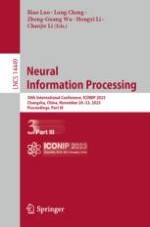2024 | OriginalPaper | Chapter
Cancellable Iris Recognition Scheme Based on Inversion Fusion and Local Ranking
Authors : Dongdong Zhao, Wentao Cheng, Jing Zhou, Hongmin Wang, Huanhuan Li
Published in: Neural Information Processing
Publisher: Springer Nature Singapore
Activate our intelligent search to find suitable subject content or patents.
Select sections of text to find matching patents with Artificial Intelligence. powered by
Select sections of text to find additional relevant content using AI-assisted search. powered by
